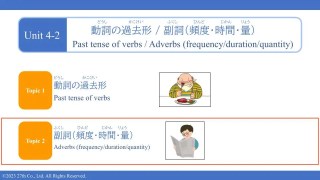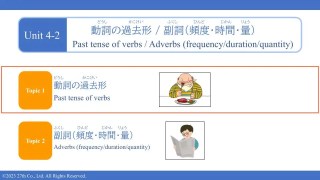Welcome to Lesson 4!
Ready to describe your surroundings and talk about your past experiences in Japanese? In Lesson 4 at gokigen japanese blog, you will gain the skills to express what exists, how many there are, and what happened before now. This lesson is key to sharing more details in your conversations.
The main goals of this lesson are to enable you to understand and express:
- The existence and quantity of things and people around you.
- Actions that took place in the past.
Key grammar and vocabulary you will learn include:
- Using あります (arimasu) and います (imasu): Learn how to indicate that something or someone exists, using あります for inanimate objects and います for living beings.
- Counting Things and People: Go beyond simple numbers and learn essential Japanese counter words (数え方) to specify the quantity of items (e.g., 3 apples, 2 people) when using あります and います.
- Past Tense of Verbs: Building on your knowledge of verb groups from Lesson 3, you will learn how to transform verbs into their past tense forms to talk about completed actions or events.
- Adverbs: Add richness to your sentences by learning adverbs that express frequency (how often), duration (how long), and quantity (how much).
- Particle と (To): Explore the uses of the particle と, such as connecting multiple nouns meaning “and,” or indicating that you do something “with” someone.
- Expressing Locations: Learn vocabulary and sentence structures to describe where things or people are located, often using あります or います in conjunction with location words.
By the end of Lesson 4, you’ll be able to look around, describe what you see and how many items there are, share what you did yesterday or last week, and explain where things are located. These abilities are fundamental for richer daily communication in Japanese!
Explore the articles linked below to master expressing existence, quantity, and past events in Japanese!






